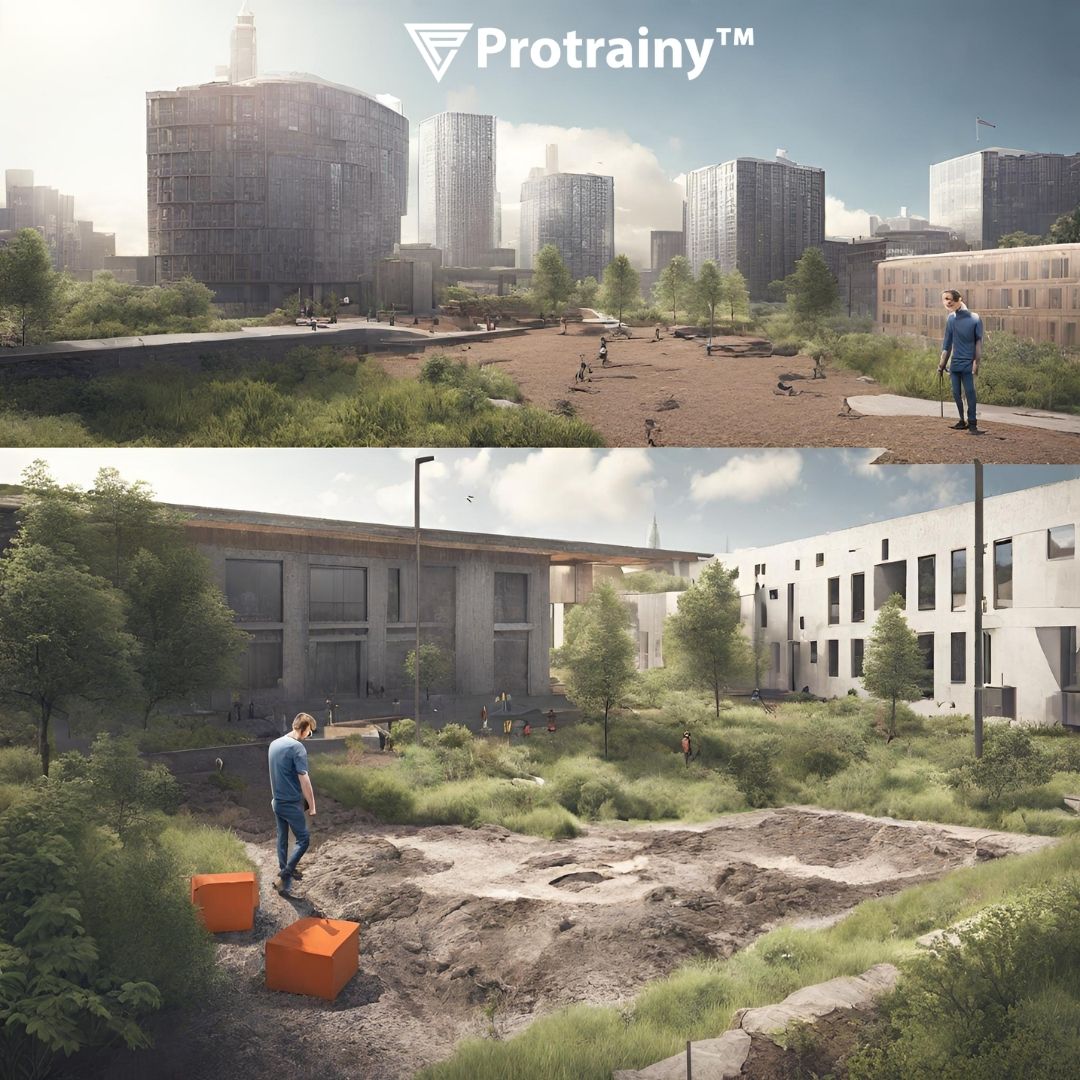Blogs
- Home
- Blogs
Soil Remediation Techniques: Transforming Contaminated Land into Safe, Usable Spaces
Protrainy | Sept. 2, 2023, 12:39 p.m.

INTRODUCTION:
Beneath our feet lies a vital yet often overlooked resource—soil. It's the very foundation upon which our ecosystems, agriculture, and urban environments thrive. However, in a world marked by industrialization, urbanization, and decades of pollution, the health of our soil is increasingly compromised. Contaminated land poses serious threats to human health and the environment, but through soil remediation techniques, we have the power to turn these tainted terrains into safe, productive spaces. In this blog, we'll dig deep into the world of soil remediation, exploring its practical applications, innovative technologies, and the real-world impact it has on our environment and communities.
The Hidden Threat Below: Contaminated Soil's Toll
Contaminated soil is an insidious menace, silently endangering both the environment and human well-being. Chemical spills, industrial runoff, improper waste disposal, and historical land use practices have all left a toxic legacy in the earth beneath our feet. The consequences range from soil infertility and water pollution to the spread of hazardous substances through the food chain.
1. Soil Remediation Defined: Restoring Soil Health
Soil remediation encompasses a diverse set of technologies and practices aimed at mitigating the effects of soil contamination. The ultimate goal is to restore soil health, making it safe for human use, agriculture, and ecosystem vitality.
2. Site Assessment: Unearthing the Problem
The first step in any soil remediation project is a thorough site assessment. This process involves identifying the contaminants, their distribution, and their potential pathways of migration. Engineers and environmental scientists conduct soil sampling and analysis to understand the extent of the contamination.
3. Excavation and Removal: The Soil Surgical Procedure
In cases of localized contamination, excavation and removal may be the most effective approach. Contaminated soil is carefully excavated and transported to specialized facilities for treatment or disposal. This method is particularly suited for contaminated "hotspots."
4. Soil Washing: Cleaning the Earth
Soil washing is an innovative technique that involves mechanically or chemically separating contaminants from soil particles. The soil is mixed with water and then subjected to various processes, such as agitation, screening, and flotation, to remove contaminants. Clean soil is then returned to the site.
5. Bioremediation: Nature's Cleanup Crew
Bioremediation harnesses the power of microorganisms to degrade or transform contaminants in the soil. Bacteria, fungi, and plants are used to break down pollutants into harmless substances. This technique is not only effective but also sustainable, as it relies on natural processes.
6. Phytoremediation: Green Cleanup Machines
Phytoremediation takes advantage of certain plants' ability to absorb, accumulate, and detoxify contaminants from the soil. Trees, shrubs, and other vegetation are carefully selected and planted in contaminated areas to facilitate the removal of pollutants.
7. In Situ Chemical Oxidation: Breaking It Down
In situ chemical oxidation involves injecting or mixing oxidizing agents directly into the contaminated soil. These agents react with the contaminants, breaking them down into less harmful substances. This method is particularly effective for organic contaminants. Thermal desorption employs high temperatures to volatilize and remove contaminants from soil. The process can be conducted on-site or at specialized facilities. It's particularly useful for treating soils contaminated with volatile organic compounds.
Case Study: The Gowanus Canal Cleanup
The Gowanus Canal in Brooklyn, New York, is a prime example of the transformative power of soil remediation. Once dubbed "Lavender Lake" due to its noxious appearance and odor, this Superfund site is undergoing extensive remediation efforts. Innovative technologies, including dredging, capping, and bioremediation, are being employed to restore the canal's water quality and surrounding land. The impact of soil remediation extends far beyond the soil itself. By restoring contaminated land to health, we create safe spaces for communities, enable sustainable agriculture, and protect vital ecosystems. Furthermore, these efforts help reduce the spread of pollutants to water sources and improve overall environmental quality.
Conclusion: Healing the Earth Beneath Our Feet
Soil remediation is a beacon of hope in the battle against soil contamination—a testament to human ingenuity, scientific innovation, and the commitment to environmental stewardship. As we grapple with the consequences of decades of industrialization, the remediation of contaminated land stands as a practical, impactful solution. By healing the earth beneath our feet, we not only ensure a healthier future for our communities but also pay homage to the essential role that soil plays in sustaining life on our planet. In the face of contamination, soil remediation is our way of giving back to the earth that has provided us with so much.
